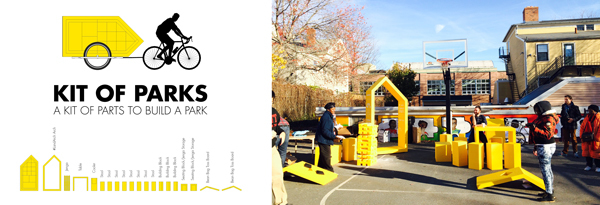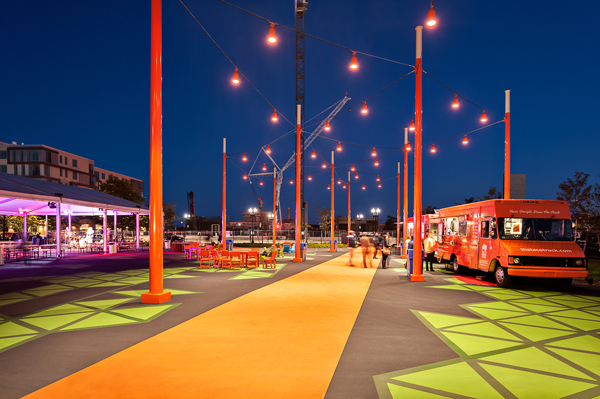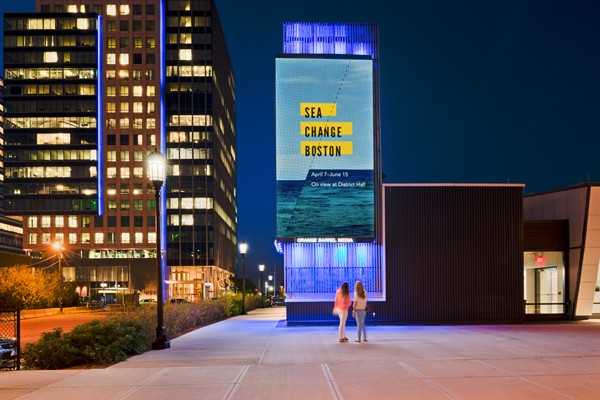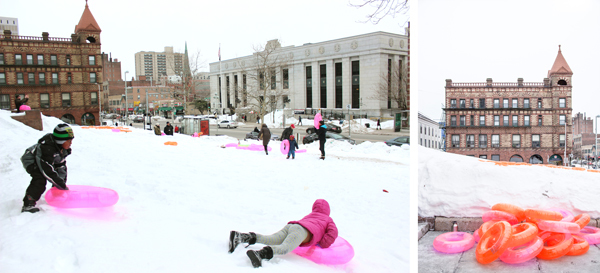Nina Chase ASLA
Job title and company: Associate landscape architect, Sasaki Associates; adjunct lecturer, Northeastern University
Degree(s): BSLA, West Virginia University; MLA, Harvard University Graduate School of Design
Professional interests:
I greatly admire people and projects that position landscape as a foundational building block for cities. Think Frederick Law Olmsted and the Back Bay Fens or Central Park. I see my own work situated between landscape architecture and urban design. I plan for and design unexpected public spaces in cities and weave natural systems—like floodwater, snow, and habitat—into urban projects.
What are you working on now?
I’m currently working on projects that are framing public spaces and placemaking initiatives as drivers for urban transformation. At Sasaki, I’m working on the revitalization of the Allegheny River riverfront in Pittsburgh’s Strip District neighborhood. I’m also working with a great team at Sasaki on urban design and landscape architecture guidelines for Pennsylvania Avenue between the White House and the Capitol Building in [Washington,] DC.
I’ve been working with my colleague Philip Dugdale on a playful side project called Kit of Parks. Kit of Parks is a kit of parts to build a park. Our first Kit of Parks was designed as a teaching tool for the Boston Society of Landscape Architects. Created out of affordable materials and constructed in Sasaki’s new [Fabrication Lab, or] FabLab, Kit of Parks was designed to be portable, serving underprogrammed public spaces in any neighborhood. [As Dugdale says on Sasaki’s blog,] “Kit of Parks can be biked anywhere and unpacked in less than 10 minutes. It provides an instant boost of color, fun, and community gathering wherever it is parked.” In the near future, we’re envisioning a series of kits that can be adapted to activate public spaces with pop-up cafes, reading areas, happy-hour hangouts, children’s play spaces, and more.

Kit of Parks is a portable kit of parts to build a park. Kit of Parks made its community debut at the Margaret Fuller House Turkey Drive in Cambridge this past November
How do you explain to your mom what you do for a living?
Thankfully, my mom is well versed in landscape architecture lingo. What throws me for a loop is small talk at cocktail parties. “You look too small to drive a tractor!” was my all-time favorite response. Luckily, the Lawn on D helps me do the talking now. I was part of the team that designed the temporary park that the [Massachusetts Convention Center Authority] commissioned; and now, whenever people ask what a landscape architect does, I have a brightly colored, ping pong–infused example to point to.

The Lawn on D has generated early momentum for the development of D Street in Boston.
Where is the field of architecture headed?
Some of the field’s most exciting work is coming from firms that practice as hybrids, working on both client projects and internally backed research. Today, we’re facing environmental and urban threats—sea-level rise, drought, food scarcity, to name a few— that are occurring at the scale of entire cities and regions. To complicate matters, those cities and regions often do not have one single body who can act as the client to address resiliency issues. It therefore requires creative partnerships to make change happen. Firms like Sasaki are developing new modes of working, often with nonprofits and universities, to tackle these issues, translating research and advocacy into practice. Our visionary clients are also recognizing that they can drive large-scale change. Along with internal firm-driven research, these clients push us to expand the limits of our practice.

Sea Change: Boston was a Sasaki-supported research initiative, exhibited at District Hall in Boston (pictured), that examined Boston’s vulnerabilities to sea-level rise and demonstrated design strategies for coastal resilience.
What architectural buzzword would you kill?
There are too many! See Landscape Urbanism Bullshit Generator for inspiration.
What are you reading?
I’ve been going back to the basics. This fall I’m teaching an urbanism studio at Northeastern University, and I’ve been rereading essays by the greats: Corner, Lynch, Spirn, Koolhaas, McHarg, others. It’s refreshing to revisit these texts. They’ve reminded me how necessary it is to condense complicated contemporary thinking into simple, bold ideas.
Do you sketch by hand or digitally?
Always both. I sketch by hand to organize my thoughts, then I produce final images digitally.
Can design save the world?
I’m wary of design as an end product saving the world, but I think design, as a process, can change the world for the better.
Who or what deserves credit for your success?
I’ve learned that one person cannot and should not do it all. Partnerships are key. I credit my career trajectory to collaborations with my ridiculously clever colleagues and friends.

White Space, by Nina Chase, David Buckley Borden, and Emily Milliman, was a flash installation of snow tubes in front of Cambridge City Hall designed to reclaim unusable, snow-covered green space in early 2015.

A team of Sasaki designers launched and implemented a public engagement campaign in response to Mayor Walsh’s City Hall Plaza Request for Ideas.
If you could give the you-of-10-years-ago advice, what would it be?
Put down the portfolio. Your career will not live or die because of the layout of your résumé. Go out and meet the movers and shakers. Volunteer, go to an obscure lecture, get coffee with someone who intimidates you.
Whom would you like the BSA to interview next?
Sam Aquillano, founder and executive director of the Design Museum Foundation. Sam’s work is contributing to the public conversation about design in Boston—we could use more of that.
If you were on a late-night TV show, what would your 30-second plug be?
Wouldn’t that be something, if a landscape architect made it to late night! If I [were] ever so lucky, my pitch would be:
Public spaces are the communal glue that keep a city lively and diverse. As we continue to improve our urban fabric, we owe it to ourselves to design incredible, multifunctional outdoor places. Let’s design vibrant, public spaces that democratically mix people and ideas. Let’s design beautiful, accessible streets and sidewalks that connect residents to public transit. Let’s create [a] habitat for people and animals alike [that provides] places to recreate and relax while capturing rainwater and restoring ecology. Let’s invest in equitable public spaces for the future of our cities.

